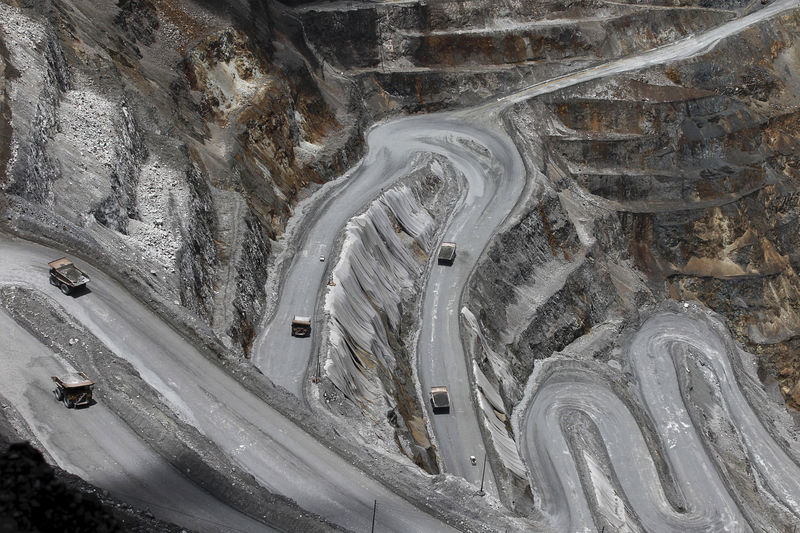* Zinc has been top pick by many investors, analysts this year
* Big mine closures not yet caused shortages of refined metal
* Glencore holding back on restarts, but others are ramping up
* FACTBOX on rising mine output: China mine capacity graphic: http://tmsnrt.rs/2oj61v8
By Eric Onstad
LONDON, April 11 (Reuters) - Expected shortages of zinc, a metal often favoured by speculators, may not materialise this year because recent price gains have spurred miners around the world to increase output.
Zinc was the best performer on the London Metal Exchange last year with a surge of 60 percent and many investors and analysts had pegged the metal as their top pick for 2017.
It had gained as much as 16 percent by mid-February, but has given up most of those gains as some speculators got cold feet.
"There's a lot of optimism, but we think a lot of it is misplaced," Claire Hassall of consultancy CHR Limited told Metal Events' recent International Zinc Conference in London.
"We are actually seeing quite a strong response to prices ... and there are also other increases in mine production which are not price related."
Heady price gains last year were driven by closures of major mines such as Century in Australia, Lisheen in Ireland and suspensions of other operations, sparking worries about supply.
Those closures created shortages of concentrate - partly processed ore - but it has not yet translated into a scramble for refined zinc, mainly used for galvanizing steel, since inventories have largely filled the gap.
Premiums for physical refined zinc in top consumer China, based on levels in Shanghai warehouses, have slipped 15 percent so far this year to $110 per tonne, showing that refined metal supplies are healthy. ZN-BMPBW-SHMET
MINES RAMP UP
Concentrate shortages could also soon ease.
Mines are gradually increasing production, including the U.S. Middle-Tennessee operations of Nyrstar NYR.BR , Vedanta's VED.L Rampura Agucha in India, and Antamina in Peru, which is due to double zinc output this year. high-profile zinc miner and trader Glencore GLEN.L has not restarted most of its closed operations, its output has been creeping higher.
Swiss-based Glencore made waves in October 2015 by announcing 500,000 tonnes of suspensions due to low prices.
In the end, the decline in Glencore's zinc production last year was 350,000 tonnes, company reports show, partly due to an 8 percent rise in output in the fourth quarter.
Analyst Nicholas Snowdon at Standard Chartered (LON:STAN) still expects a deep deficit this year, pushing prices up to an average of $3,100 a tonne in the fourth quarter, up from $2,618 at the close on Monday, but even he is wary.
"Fundamentals are entering a mature, late cycle phase where there are more risks ... that could actually disable the deficits we're forecasting," he said.
CHINA OUTPUT, DEMAND
China, which accounts for about 40 percent of global mine supply of zinc, is also steadily increasing output.
Data from the International Lead and Zinc Study Group (ILZSG) showed Chinese mine supply surged by nearly a fifth last year, helping to balance the big mine closures elsewhere, leaving total global mine production virtually flat.
Newly launched and expanded mines in China are due to boost capacity by a further 244,000 tonnes in 2017, Xia Cong of China state-backed researcher Antaike told the London zinc conference.
Adding to the uncertain outlook are indications that demand for zinc is lacklustre.
Consultancy Capital Economics expects China's demand for zinc to grow by only 1.5 percent this year, down from 3.5 percent last year, partly due to slower construction activity on the back of tighter monetary conditions.
"We see relatively subdued demand growth," said Caroline Bain, Capital Economics' chief commodities economist.
"Our view is we're not going to see the expected crunch that everyone is looking for."
<^^^^^^^^^^^^^^^^^^^^^^^^^^^^^^^^^^^^^^^^^^^^^^^^^^^^^^^^^^^ FACTBOX on rising mine output
ID:nL8N1HF1YX
^^^^^^^^^^^^^^^^^^^^^^^^^^^^^^^^^^^^^^^^^^^^^^^^^^^^^^^^^^^> (Edited by Pratima Desai and David Evans)
